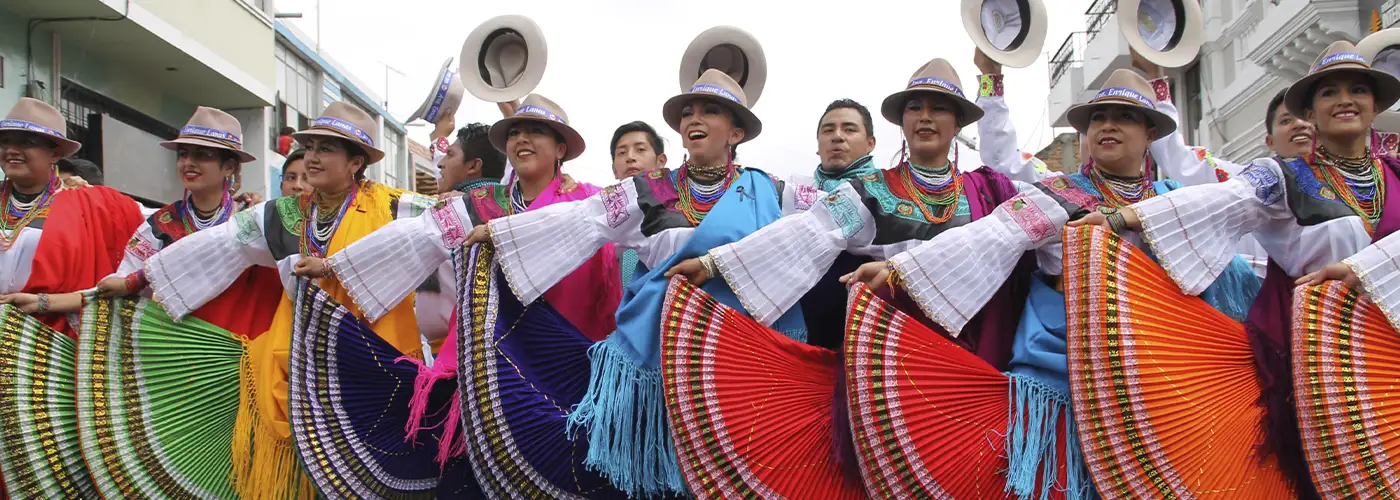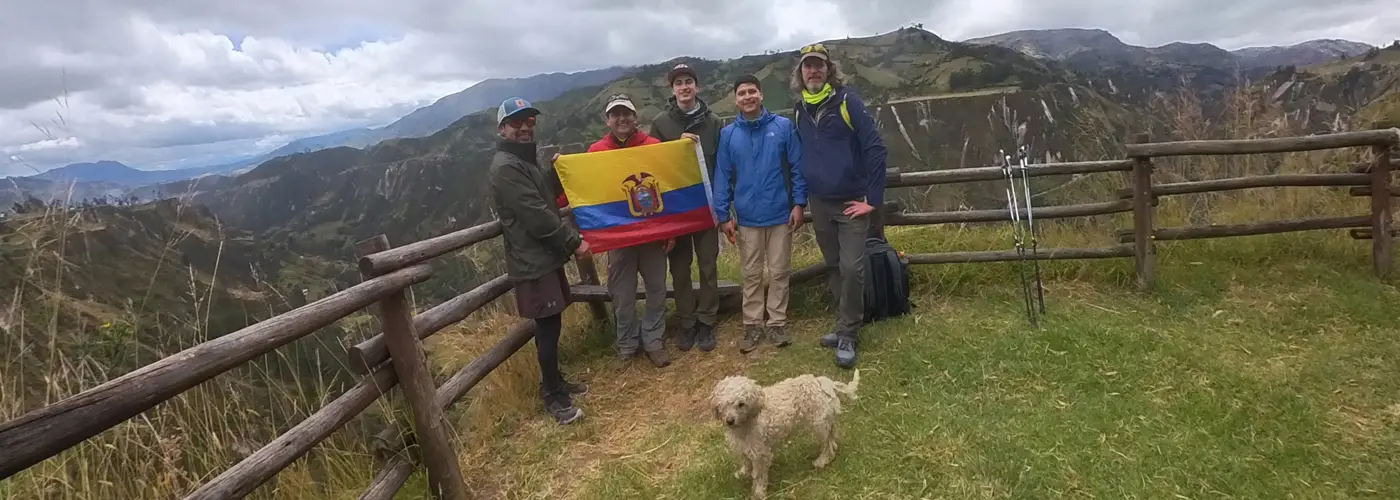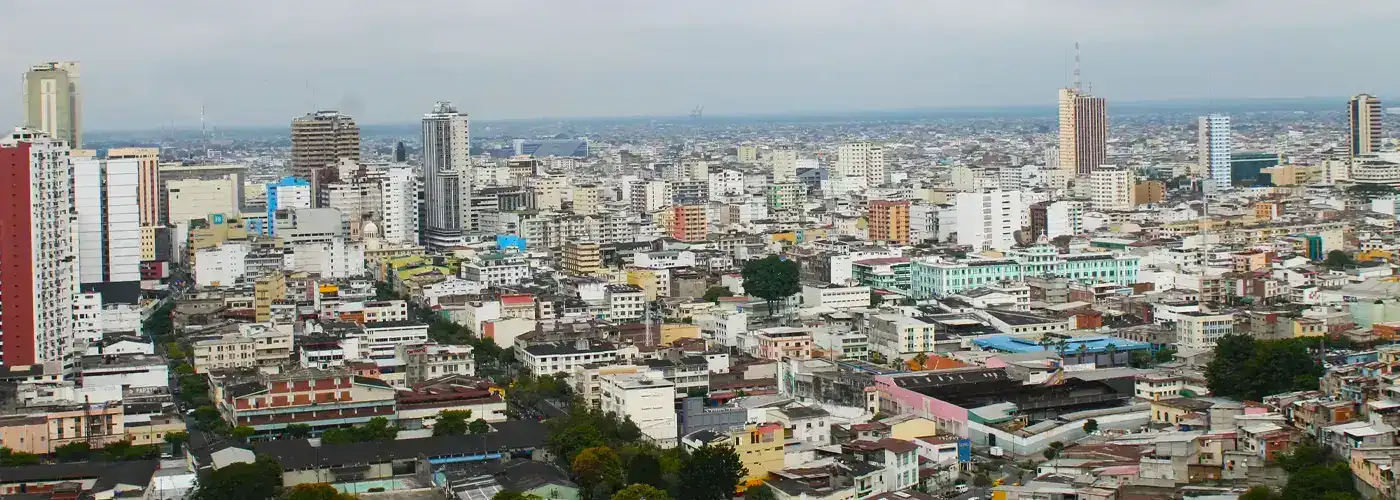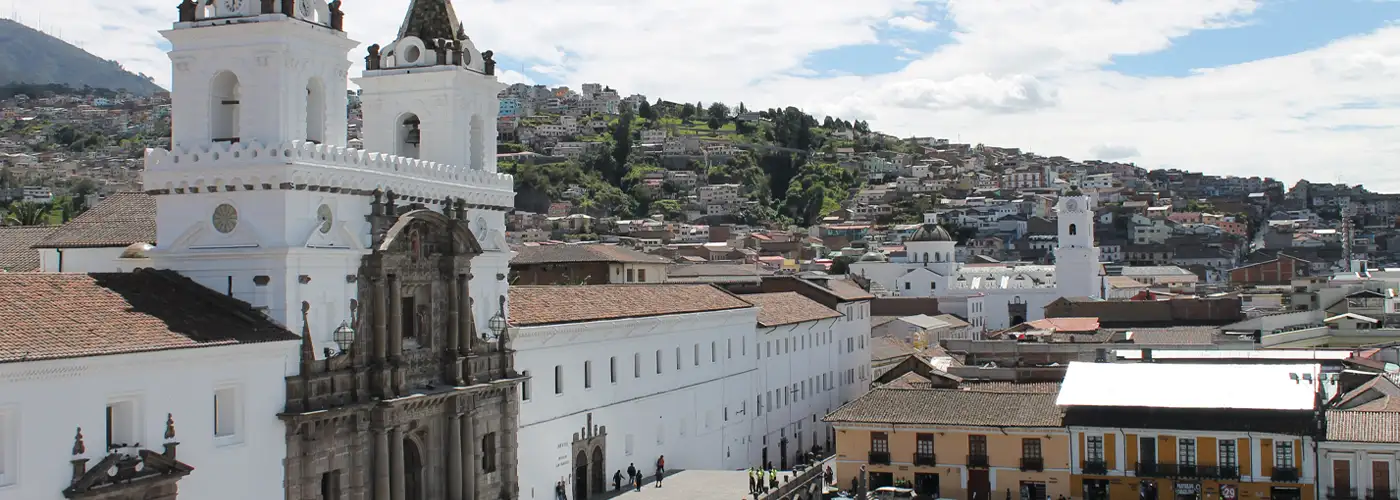
General Galapagos Travel Tips
The planes to Galapagos leave from Quito and some make a stop in Guayaquil to pick up more passengers. On Galapagos there are two airports where planes from the mainland can land, one on Baltra Island, north of Santa Cruz, and one on San Cristobal. It is always a good idea to have an eye on our Galapagos Last-Minute offers!
One option is to take a cruise. The big advantage of visiting the Galapagos Islands on a cruise is the possibility to visit the islands that are farther away. Also you don’t lose time traveling, because the ship travels during the night to take you to the next place to visit. Yachts are usually small for about 16 passengers, with some exceptions.
However, if you are on a limited budget or if you don’t want to spend a lot of time on a boat, land-based tours can be a viable alternative. Please be aware that on a land-based tour you will not be able to visit remote islands and you probably won’t see as much wildlife as on a cruise.
Island hopping describes a land-based tour, meaning you will spend the nights in a hotel on one of the inhabited islands (Santa Cruz, Isabela, or San Cristobal) and do day tours. Depending on the tour you pick, you will stay on one or more of the islands.
Transportation between the islands of Santa Cruz and Isabela and Santa Cruz and San Cristobal is on small speedboats that take about 20 passengers. The crossing takes about 2.5 hours and can be quite bumpy and uncomfortable when the sea is rough. Be sure to take some medication against seasickness and bring a sick-bag – just in case (suggestion: take one from the plane…). Before you get on the boat, your bags will be checked and sealed, be sure to take out anything you might need during the crossing.
If you feel uncomfortable about traveling that way you can take small aircrafts between the islands.
If you’re worried about getting seasick you should visit the islands between February and March when the sea is calmer. While you may consider land-based tours to be the better alternative for you, please keep in mind that the speedboats between the islands are usually very bumpy rides, depending on the weather in Galapagos. A yacht might actually the better option, if you take adequate medication. If you are totally set against traveling anywhere by boat, you can still enjoy the Galapagos: there are small aircrafts flying between the main islands.
On the plane to Galapagos you are allowed one checked bag of 23 kilos and 8 kilos of hand luggage.
Generally speaking, the weather in Galapagos is quite nice and warm. There are two seasons in Galapagos, influenced by two currents. In the first half of the year it is mainly sunny and the water has a temperature of about 23 °C/ 73 °F, but there may be some heavy tropical rain showers. The second half of the year is dry, but the sky is often overcast and the water is cooler.
Yes! You will definitely see some animals in their natural habitat. What may vary is the number of animals and species, according to climate conditions, places you visit and luck. Your best chances to spot some wildlife are of course the uninhabited islands. But you will probably still see a sea lion swimming around in Puerto Ayora’s harbor, an iguana sharing Isabela’s beautiful beach with you and giant tortoises in Santa Cruz’s highlands.
We recommend that any itinerary should include at least one uninhabited island. If you go on a cruise you get the chance to see some of the more remote islands. Genovesa is considered as the most beautiful islands, Española has some amazing fauna and Rábida is a striking beauty with red earth and many palo santo trees. Puerto Ayora on Santa Cruz is the islands’ touristic center; here you will find many hotels, restaurants and bars as well as souvenir shops. Puerto Baquerizo on San Cristobal is smaller and quieter and Puerto Villamil on Isabela has the most beautiful beaches. Read more Galapagos travel tips about all the islands on our Galapagos Information Page.
Tap water on the Galapagos is usually salty and not fit for human consumption. All of the yachts and most of the hotels offer dispensers with clean drinking water which you should also use to brush your teeth with.
In case of a medical emergency during a cruise, the crew will be in charge of getting help. The yachts all have radio connection with the marine, which has a helicopter that they use for emergency evacuations.
Not enough Galapagos travel tips? If you didn’t find the information you were looking for, please contact us and we will answer all your questions.
Nature events through the year
This calendar includes some of the most interesting sights throughout the year. Please note that this lists provides a mere guideline, actual sightings and weather conditions may vary.
January
- Summertime and beginning of the first rains
- Temperatures from water and air begin to raise
- Land birds begin with their nest building
Best time for snorkeling - Isla Española: marine iguanas turning into red, black or green; the pairing season begins
- Green turtles bury their eggs at the beach
- White-cheeked pintails begin breeding
- Isla Floreana: flamingos begin to nest
- Isla Española: Nazca boobies finish their breeding season
- Water temperature at 77 °F until April
- Many tropicbirds
February
March
- Month with the most hours of sunshine
- Isla Fernandina: marine iguanas begin to nest
- Isla Española: arrival of the first albatrosses
- Penguins are very active in the water
- See the cups of the swallow-tailed gulls at the cliffs
- Isla Española: Plenty of albatrosses arrive
- Turtles finish their breeding season
- The eclosion of the eggs of marine iguanas starts
- Best conditions for snorkeling: smooth water, great view
- Rain gets less (almost two showers every two weeks)
April
May
- Month with the most hours of sunshine
- Isla Fernandina: marine iguanas begin to nest
- Isla Española: arrival of the first albatrosses
- Penguins are very active in the water
- See the cups of the swallow-tailed gulls at the cliffs
- Beginning of the dry season
- Isla Santa Cruz: hike of the turtles into deeper realms to find a suitable nesting site
- Humpback whales swim from the south along the coast to Galapagos
- Southern migrant birds use the islands for their rest area
- Ocean current is a little bit stronger
June
July
- Beginning of the colder season, sea is rough
- Isla Isabela/ Fernandina: whales and dolphins are sighted
- Isla Española: blue-footed boobies are very active
- Lava Lizards begin their reproduction until November
- Temperature of the sea reaches a maximum of 70 °F
- Isla Española/ Santiago: Galapagos hawks begin their mating season
- Isla Santa Cruz: turtles retire to the highland
- Time of newborn sea lions begins
- Isla Genovesa: Nazca bobbies begin to nest
Water temperature drops to 64.4 °F
August
September
- Penguins are very active in the sea
- Can find the brown pelican on many islands
- Most sea birds are active in their nesting places
- The cold “Garúa-Time” reaches maximum
- The Lava herons begin nesting (until March)
- The Galapagos sea lion begin mating season
- Best conditions for snorkelers to see sea turtles
- Blue-footed boobies raise their cubs
Oktober
November
- Terns have their breeding season
- Water temperature rises
- Weather is dry and warm
- Young sea lions play with the snorkelers in the water
- Reproduction of the seagulls begins
- Warm season begins; Galapagos is getting greener
- Young albatrosses leave the nest
- Best weather: sunny days, temperatures rise, not much wind
- Galapagos tortoises begin their breeding season
- Migrant birds begin their journey in the south
December
Which animals can be found where?
This list (not exhaustive) shows where each animal can be found, according to visitors’ sites on the different islands.
Albatross: Punta Suarez (April to December)
Audubon Shearwater: Punta Suarez, Gardner Bay, Plazas, Seymour, Prince Phillip’s Steps, Elizabeth Bay, Tagus Cove
Blue-footed Boobie: Punta Suarez, Punta Cormorant, Santa Fe, Plazas, Seymour, Black Turtle Cove, Elizabeth Bay, Tagus Cove, Isla Lobos
Brown Noddy: Punta Suarez, Gardner Bay, Punta Cormorant, Plazas, Seymour, Bachas, Rabida, Black Turtle Cove, Elizabeth Bay, Tagus Cove, Puerto Egas
Brown Pelican: Punta Suarez, Gardner Bay, Punta Cormorant, Santa Fe, Plazas, Seymour, Bachas, Rabida, Black Turtle Cove, Bartholome, Sullivan Bay, Elizabeth Bay, Punta Espinoza, Tagus Cove, Puerto Egas, Isla Lobos
Common Gallinule: Charles Darwin Station, Sierra Negra Volcano, Punta Moreno
Darwin’s Finches: Cerro Colorado, Punta Suarez, Gardner Bay, Punta Cormorant, Post Office Bay, Santa Fe, Plazas, Seymour, Mosquera, Dragon Hill, Bachas, Rabida, Chinese Hat, Prince Phillip’s Steps, Darwin Bay, Bartholome, Sullivan Bay, Highlands, Charles Darwin Station, Sierra Negra Volcano, Punta Moreno, Elizabeth Bay, Punta Espinoza, Tagus Cove, Espumilla Beach, Puerto Egas, Isla Lobos
Elliot’s Storm Petrel: Gardner Bay, Post Office Bay, Plazas, Bachas, Prince Phillip’s Steps, Darwin Bay, Bartholome, Punta Moreno, Elizabeth Bay, Punta Espinoza
Española Lava Lizard: Punta Suarez, Gardner Bay
Española Mockingbird: Punta Suarez, Gardner Bay
Flamingo: Punta Cormorant, Bachas, Dragon Hill, Sierra Negra Volcano, Punta Moreno
Flightless Cormorant: Punta Moreno, Elizabeth Bay, Punta Espinoza, Tagus Cove
Floreana Lava Lizard: Punta Cormorant, Post Office Bay
Galapagos Dove: Punta Suarez, Gardner Bay, Seymour, Prince Phillip’s Steps, Darwin Bay, Puerto Egas, Isla Lobos
Galapagos Flycatcher: Cerro Colorado, Gardner Bay, Punta Cormorant, Post Office Bay, Santa Fe, Dragon Hill, Bachas, Rabida, Highlands, Charles Darwin Station, Tagus Cove, Espumilla Beach
Galapagos Fur Seal: Seymour, Prince Phillip’s Steps, Puerto Egas
Galapagos Hawk: Punta Suarez, Gardner Bay, Prince Phillip’s Steps, Sierra Negra Volcano, Punta Espinoza (r), Puerto Egas
Galapagos Snake: Punta Suarez (r), Santa Fe (r), Seymour (r), Rabida (r), Bartholome (r), Sullivan Bay (r), Punta Espinoza (r), Puerto Egas (r)
Giant Tortoise: Cerro Colorado, Highlands, Charles Darwin Station, Sierra Negra Volcano
Great Blue Heron: Punta Suarez, Punta Cormorant, Bachas, Mosquera, Dragon Hill, Black Turtle Cove, Sullivan Bay, Elizabeth Bay, Punta Espinoza, Tagus Cove, Puerto Egas
Great Frigate Bird: Seymour, Prince Phillip’s Steps, Darwin Bay, Isla Lobos
Green Sea Turtle: Punta Suarez, Gardner Bay, Punta Cormorant, Santa Fe, Bachas, Black Turtle Cove, Sullivan Bay, Punta Moreno, Elizabeth Bay, Punta Espinoza, Tagus Cove, Puerto Egas, Isla Lobos
Land Iguana: Plazas, Seymour, Dragon Hill, Charles Darwin Station
Lava Gull: Punta Suarez, Seymour, Bachas, Mosquera, Darwin Bay, Puerto Egas
Lava Heron: Punta Suarez, Seymour, Mosquera, Dragon Hill, Rabida, Black Turtle Cove, Bartholome, Sullivan Bay, Elizabeth Bay, Punta Espinoza, Tagus Cove, Puerto Egas, Isla Lobos
Lava Lizard: Punta Suarez, Gardner Bay, Punta Cormorant, Santa Fe, Plazas, Seymour, Mosquera, Dragon Hill, Bachas, Rabida, Bartholome, Sullivan Bay, Charles Darwin Station, Punta Moreno, Punta Espinoza, Tagus Cove, Espumilla Beach, Puerto Egas
Madeiran Storm Petrel: Gardner Bay, Post Office Bay, Plazas, Prince Phillip’s Steps, Darwin Bay, Punta Moreno, Elizabeth Bay, Punta Espinoza, Tagus Cove
Magnificent Frigatebird: Seymour
Marine Iguana: Punta Suarez, Gardner Bay, Santa Fe, Plazas, Seymour, Mosquera, Dragon Hill, Bachas, Rabida, Prince Phillip’s Steps, Darwin Bay, Bartholome, Sullivan Bay, Charles Darwin Station, Punta Moreno, Punta Espinoza, Tagus Cove, Puerto Egas
Mocking Bird: Cerro Colorado, Punta Suarez, Gardner Bay, Santa Fe, Dragon Hill, Prince Phillip’s Steps, Darwin Bay, Highlands, Charles Darwin Station, Sierra Negra Volcano, Punta Moreno, Punta Espinoza, Tagus Cove, Espumilla Beach, Puerto Egas
Masked Boobie: Punta Suarez, Plazas, Prince Phillip’s Steps, Darwin Bay
Penguin: Chinese hat, Bartholome, Sullivan Bay, Punta Moreno, Elizabeth Bay, Punta Espinoza, Tagus Cove
Red-billed Tropicbird: Punta Suarez, Punta Cormorant, Plazas, Seymour, Prince Phillip’s Steps, Darwin Bay
Red-footed Boobie: Prince Phillip’s Steps, Darwin Bay
San Cristobal Lava Lizard: Isla Lobos
San Cristobal Mockingbird: Cerro Colorado
Santa Fe Land Iguana: Santa Fe
Sea Lion: Punta Suarez, Gardner Bay, Punta Cormorant, Santa Fe, Plazas, Seymour, Mosquera, Rabida, Chinese Hat, Prince Phillip’s Steps, Darwin Bay, Bartholome, Sullivan Bay, Elizabeth Bay, Punta Espinoza, Tagus Cove, Puerto Egas, Isla Lobos
Storm Petrel: Gardner Bay, Post Office Bay, Plazas, Prince Phillip’s Steps, Darwin Bay, Sullivan Bay, Punta Moreno, Elizabeth Bay, Punta Espinoza, Tagus Cove
Striated Heron: Mosquera, Dragon Hill, Rabida, Black Turtle Cove, Sullivan Bay, Elizabeth Bay, Punta Espinoza, Tagus Cove
Swallow-tailed Gull: Punta Suarez, Plazas, Seymour, Rabida, Prince Phillip’s Steps, Darwin Bay, Tagus Cove, Isla Lobos
Vermilion Flycatcher: Highlands, Sierra Negra Volcano
White-cheeked Pintail Duck: Bachas, Dragon Hill, Charles Darwin Station, Punta Moreno
Yellow Warbler: Cerro Colorado, Punta Suarez, Gardner Bay, Punta Cormorant, Post Office Bay, Santa Fe, Plazas, Dragon Hill, Black Turtle Cove, Prince Phillip’s Steps, Darwin Bay, Sullivan Bay, Highlands, Charles Darwin Station, Sierra Negra Volcano, Punta Moreno, Punta Espinoza, Tagus Cove, Espumilla Beach, Puerto Egas, Isla Lobos
Yellow-crowned Night Heron: Punta Suarez, Rabida, Darwin Bay, Elizabeth Bay, Punta Espinoza, Tagus Cove, Puerto Egas
Latest blog posts
- Contact Us
Some great Tour ideas
- 7 days
- 5 days
From US$ 2060 p.p.
- 6 days
From US$ 4490 p.p.
- 8 days
From US$ 5490 p.p.
- 8 days
- 8 days






